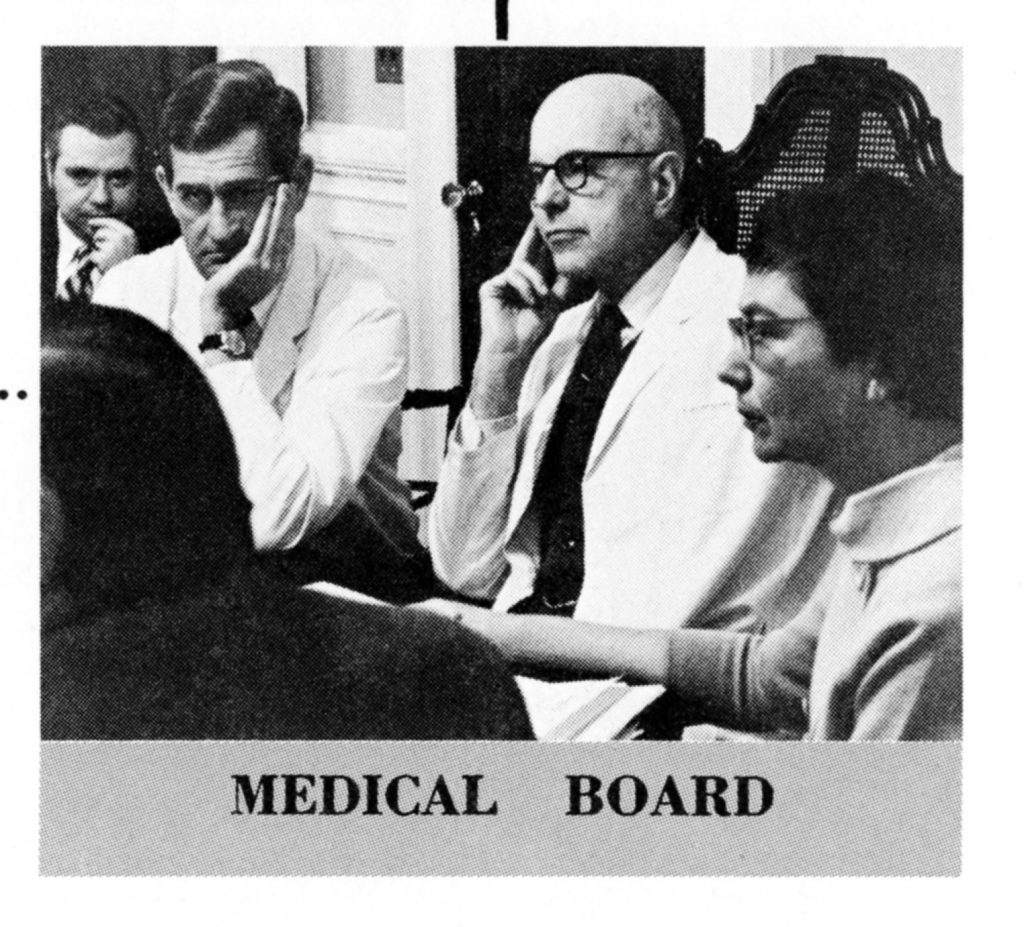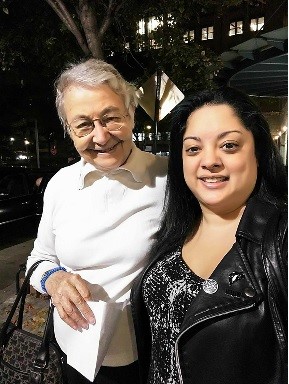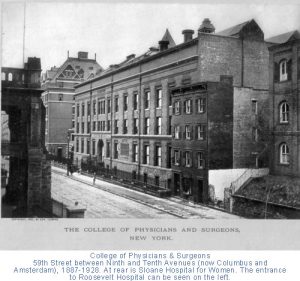Celebrating Women’s History Month
In celebration of Women’s History Month, the Aufses Archives would like to highlight one of the outstanding physicians who practiced at the former St. Luke’s Hospital.

Virginia Kanick (1925-2017) was a radiologist at a time when a small percentage of physicians were women and fewer practiced in that particular area. She was born in Pennsylvania, but when she was about fourteen, the family moved to Richmond, Virginia to be closer to her older brother, who was already practicing medicine there. Kanick, however, never did become a ‘southern belle;’ she described herself as having an “aggressive” personality and loved to learn. She was the high school valedictorian and chose to return north to pursue college at Barnard College, where she graduated Summa Cum Laude and was inducted into Phi Beta Kappa, the oldest, and most prestigious, academic honor society in the United States.
Left: Dr. Virginia Kanick reviewing X-rays in 1971
At Barnard, she investigated many subject specialties, from anthropology to classical studies, archaeology to Russian history, before settling into science classes with the intention to pursue medicine. She earned her MD from the College of Physicians and Surgeons in 1951 and then interned at Case Western Reserve. She applied to a radiology residency program at Columbia, but their fall semester quota was full. Accepted into the program starting in January, the administrators suggested she spend a few months at St. Luke’s Hospital, an affiliated teaching hospital, before joining the Columbia program. However, she enjoyed the atmosphere and comradery of St. Luke’s so much that she completed the radiology residency there before receiving an appointment as an attending and spending her career at St. Luke’s.
Dr. Kanick was an enthusiastic teacher, especially when new equipment and technology was involved. She published over thirty articles in peer-reviewed journals. She became the first woman president of the St. Luke’s-Roosevelt Hospital Center’s Medical Board in 1980-1981 and in fact, as far as she knew, she was the first president of the Medical Board who was not a surgeon or internist, and quite possibly, the first woman to be the president of a medical board in a major teaching hospital. She was very involved in the broader professional community by serving on the board of directors of the Medical Society of the State of New York, as the secretary and officer of the Medical Society of the County of New York, and as Director of the New York State Radiology Society, among a long list of other service commitments.
(Picture right, Medical Board meeting, r-l, Drs. Kanick, Beekman, Knox and unidentified.)

However, she felt that the most important role she was involved in was working on several committees for the Radiological Society of North America, and particularly, for serving as their representative to the Advisory Committee for Medical Devices at the Food and Drug Administration, reviewing new technologies including MRI, CT, and PET scans, for seven years.

However, Dr. Kanick was not all work and no play. Though she never married, she was the beloved “auntie” to her much older siblings’ four children, hosting them on vacations here and aboard. As they grew up and married, Kanick enjoyed their 11 grandnieces and nephews and 19 great-grandnieces and nephews. Upon her retirement in 1989, one of her St. Luke’s colleagues remarked, “In spite of her busy schedule, she has made it her business to know of our personal joys and to genuinely join us in celebrating, or giving us support, advice and true empathy in times of suffering.”

Virginia Kanick fell victim to Alzheimer’s disease and passed away in 2017. She is fondly remembered by hospital staff and the many residents who trained under her guidance.
Left: Dr. Kanick fellow volunteer, Michele Feldman, circa 2016
To learn more about Dr. Kanick’s life, in her own words, watch her interview with Dr. Norma Braun. here.
Authored by Michala Biondi
——————————————————————————————————————
Sources:
https://en.wikipedia.org/wiki/Phi_Beta_Kappa
https://www.legacy.com/us/obituaries/nytimes/name/virginia-kanick-obituary?id=17515620
https://archives.mssm.edu/aa155-int178
https://www.library-archives.cumc.columbia.edu/obit/kanick-virgina

